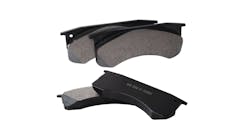The ability to identify and rectify safety issues is a critical aspect of proper commercial vehicle maintenance. In order to help ensure the safety of both its drivers and motorists on the road, fleets must be dedicated to effectively addressing vehicle problems of all types and levels of severity.
Motor carriers should be motivated to remain vigilant in their efforts to maintain their vehicles thanks to the Federal Motor Carriers Safety Administration (FMCSA), which established Compliance, Safety, Accountability (CSA) as its safety compliance and enforcement program in late 2010. CSA utilizes commercial vehicle inspections and crash results to assess the safety performance of motor carriers. The program also offers key information to prompt fleets to assess and deal with safety issues, as well as engage in good preventive maintenance practices.
All of this serves to prompt fleets to act on that information so as to avoid warnings, investigations and other interventions by law enforcement authorities.
“CSA really has forced the issue to make sure that fleets pay attention,” says Fred Fakkema, vice president of compliance, Zonar Systems, a provider of GPS fleet tracking and management solutions (www.zonarsystems.com). “It’s having that expectation or policy that they inspect their vehicles or maintain their vehicles as they move forward each day. I think we have seen an increase in that since CSA.”
ON THE RECORD
Data gleaned from CSA vehicle roadside inspections is available online in the FMCSA’s Safety Measurement System (SMS). Updated monthly, this system and the information it possesses both affects drivers’ and fleets’ safety records and is meant to help CSA keep tabs on performance and compliance issues over time. CSA specifies how data is collected, processed and distributed, and the program also determines how best to intervene and address problems with individual motor carriers.
The information about motor carriers included in each monthly SMS update includes driver and vehicle violations, accident reports from the past two years and detailed results of CSA investigations. All of the data is organized into seven of what CSA refers to as Behavior Analysis and Safety Improvement Categories (BASICS):
-- Unsafe driving: Speeding, reckless driving, improper lane change, inattention, no seatbelts.
-- Crash indicator: Histories of crash involvement (This information is not public).
-- Hours of Service (HOS): Noncompliance with HOS regulations, including logbooks.
-- Vehicle maintenance: Brakes, lights, defects, failure to make required repairs.
-- Controlled substances: Possession and/or use of controlled substances/alcohol.
-- Hazardous materials compliance: Leaking containers, improper packaging and/or placarding. (Not public).
-- Driver fitness: Invalid license, medically unfit to operate a commercial vehicle.
A number of factors determine exactly how CSA inspectors assess a vehicle’s safety (based on the aforementioned BASICS) and directly influence drivers’ and motor carriers’ safety records:
-- Number of safety violations.
-- Number of investigations.
-- Severity of safety violations.
-- Severity of crashes.
-- Timing of safety violations, with recent occurrences weighted more heavily.
-- Number of trucks/buses a carrier operates.
-- Number of vehicle miles traveled.
-- Serious violations.
CSA is designed to ensure that one serious violation or inspection will not lead to intervention by authorities or have an overwhelmingly negative effect on a motor carrier or driver’s safety records. According to Tom Bray, transportation editor, J.J. Keller & Associates, a source for regulation compliance products and services (www.jjkeller.com), the program averages out violations, inspections or vehicles -- depending on the BASIC. However, he says, a fleet that receives high-severity violations -- such as jumping an out-of-service order, excessive speeding or driving while ill or fatigued -- will see its score escalate more quickly than those that are issued minor violations -- such as long form or manner.
“Either way, if the carrier has a BASIC score that goes over the threshold and remains over for more than a month or two, a warning letter, if not a visit, can be expected,” says Bray.
THE MOST COMMON VIOLATIONS
Certain safety violations are more common than others. According to Bray, they are:
-- Log form and manner.
-- Log not current.
-- Driving beyond the eight- or 14-hour limit.
-- Speeding (6 to 10 mph over the posted speed limit).
According to Zonar’s Fakkema, the most prevalent violations are also often related to lighting, brakes, tires and HOS.
CSA weights safety violations based on the statistical likelihood they are to cause a crash. Ratings range from one to 10. The least serious violations rated a one and the most serious violations rated a 10.
“Overall, the most common violations in CSA are ‘moderate’,” says Bray, adding that those are valued at a four or a five.
“The enforcement people are human,” says Fakkema. “Most are looking for low-hanging fruit. It’s pretty obvious to see when a headlight is out, and that just gives them a violation to start from during the inspection.”
According to Bray, a fleet’s size has no impact on what specific violations are more likely to be found during CSA inspections, with one notable exception: HOS regulations.
“Many larger carriers use electronic logs, which all but eliminate the most common driver violations in the area of hours of service, while most smaller carriers do not,” says Bray. “The company’s attitude toward compliance, training, driver discipline and vehicle maintenance is more of a factor than size.”
Geographic location does yield different results in terms of most commonly found violations. The CSA inspection process is federally mandated, but inspectors are state, county and local law enforcement officers. Each officer’s department policies vary on circumstances that call for a vehicle or driver to be inspected, what to concentrate on and what the department or the local elected officials want strictly enforced. Furthermore, some states conduct more inspections or identify more violations than others.
“The argument for this approach is that it allows problems which are more visible locally or at the state level to be addressed, versus using a ‘cookie-cutter’ approach that is established at a national level,” says Bray.
WAYS TO AVOID VIOLATIONS
In order to avoid CSA violations and preserve their safety records, fleets must work diligently to ensure proper maintenance practices are being conducted by technicians working on their vehicles and to see to it that drivers are looking out for safety issues and reporting what they find before inspections occur.
The need for qualified individuals to be looking over the vehicles on a consistent basis cannot be overstated. They must influence decisions related to on-road repairs, maintenance scheduling and everything in between.
They should also properly document maintenance efforts and review each and every roadside violation or repair request. This will allow potential problem areas with the maintenance program or issues with a particular piece of equipment to be identified and rectified.
On the driver side, regular inspection of the vehicle helps ensure compliance with CSA. This means conducting a pre-trip inspection, a walk-around inspection each and every time the vehicle is parked and a post-trip inspection at the end of a shift. Perhaps more important than that, though, is that drivers’ findings must be communicated to the fleet’s maintenance department.
All of this is done to help reduce the risk of crashes and help improve safety on roadways everywhere.
“One thing is certain,” says Bray of J.J. Keller. “CSA has made many more carriers aware of their on-road compliance, and the wiser carriers have adopted practices to lower or eliminate roadside inspection violations, which cannot be doing anything other than making the roads safer. When you are complaint, you are increasing your safety. That truly is what it’s about. The vehicles are safe, not only for the driver, but the other people on the roadway.”




